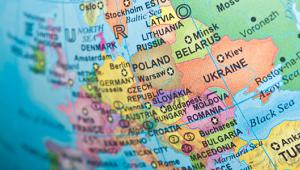The WMO estimates that this year the global average surface temperature is likely to be the warmest on record, and will breach the 1°C threshold due to the combination of a strong El Niño and human-induced global warming.
Michel Jarraud, WMO secretary-general, said the organisation’s report, The state of the global climate in 2015, would “make history” for a number of reasons.
Levels of greenhouse gases in the atmosphere reached new highs, as did the average concentration of CO₂ in the Northern hemisphere. The global average sea surface temperature is also set to break the record it set just last year. South America, Africa and Asia are all having their hottest year since measurements began. “This is all bad news for the planet,” Jarraud said.
The figures came in the week leading up to critical talks in Paris, where world leaders and their negotiators will decide on the global approach to climate change from 2020 onwards.
The report found that 2011-15 was the world’s warmest five-year period ever recorded, with the impacts of human-induced climate change exacerbated by the strongest El Niño ever measured.
The cyclical warming of tropical Pacific waters continues to strengthen, causing both floods and droughts across the Americas, Asia and Africa. Across the Americas, governments are now investing in initiatives to mitigate its impact.
South American governments have set aside billions of dollars to deal with the phenomenon. Peru is in a state of emergency and $1bn has been earmarked to prepare 2 million people vulnerable to landslides.
Bolivia has also declared a state of emergency, and Colombia and Ecuador have each adopted a set of measures to deal with the event.
Brazil on the other hand is reported to have spent 45% less on disaster risk reduction measures so far this year compared to 2014.
In Ethiopia drought has caused major food shortages: 8 million people in the country were in need of food assistance in October, and the UN has estimated this could rise to 15 million.
The report notes that the effects of the phenomenon are likely to continue even after it peaks. The event has already caused coral bleaching ‒ where warmer waters cause coral to expel the algae living in their tissues and turn completely white ‒ in the North Pacific, South Pacific and Indian Ocean.
The oceans have been absorbing more than 90% of the energy accumulating in the climate system from human emissions of greenhouse gases, resulting in higher temperatures. The tropical pacific, which is affected by El Niño, was significantly higher than average.
Globally, higher temperatures have caused major heat waves, rain fall and drought and more tropical storms than usual.
The report said that scientific assessments have found that many of the extreme events in 2011-15 period, especially those relating to high temperatures, have had their probabilities substantially increased due to human-induced climate change.
These include record high seasonal and annual temperatures in the US in 2012 and Australia in 2013, and the Argentine heat wave of December 2013.
The WMO also noted the “unusually prolonged, intense and hot dry seasons in the Amazon basin of Brazil in both 2014 and 2015”. While it said that these “cannot be stated with confidence to be part of a long-term trend”, it flagged them as of “considerable concern” in the context of potential ‘tipping points’ in the climate system ‒ whereby an abrupt, dramatic and irreversible shift in regional climates is triggered by the gradual, more predictable rise in global temperatures.













